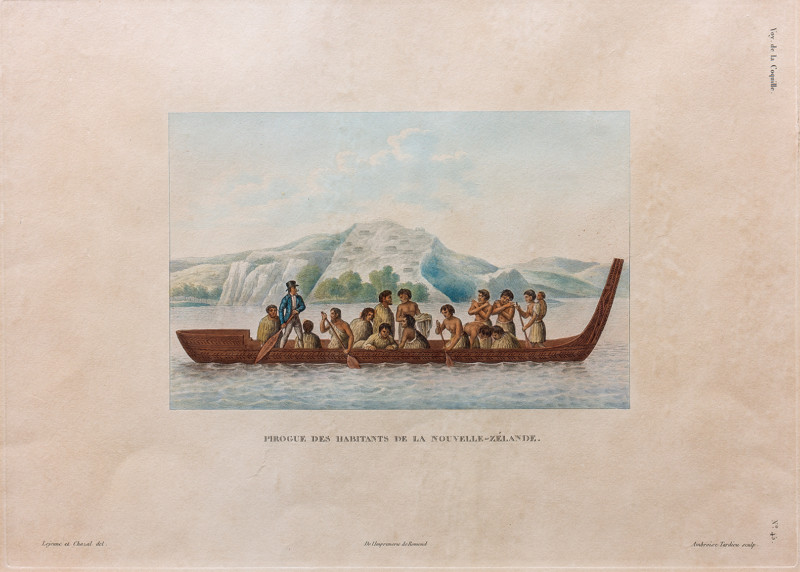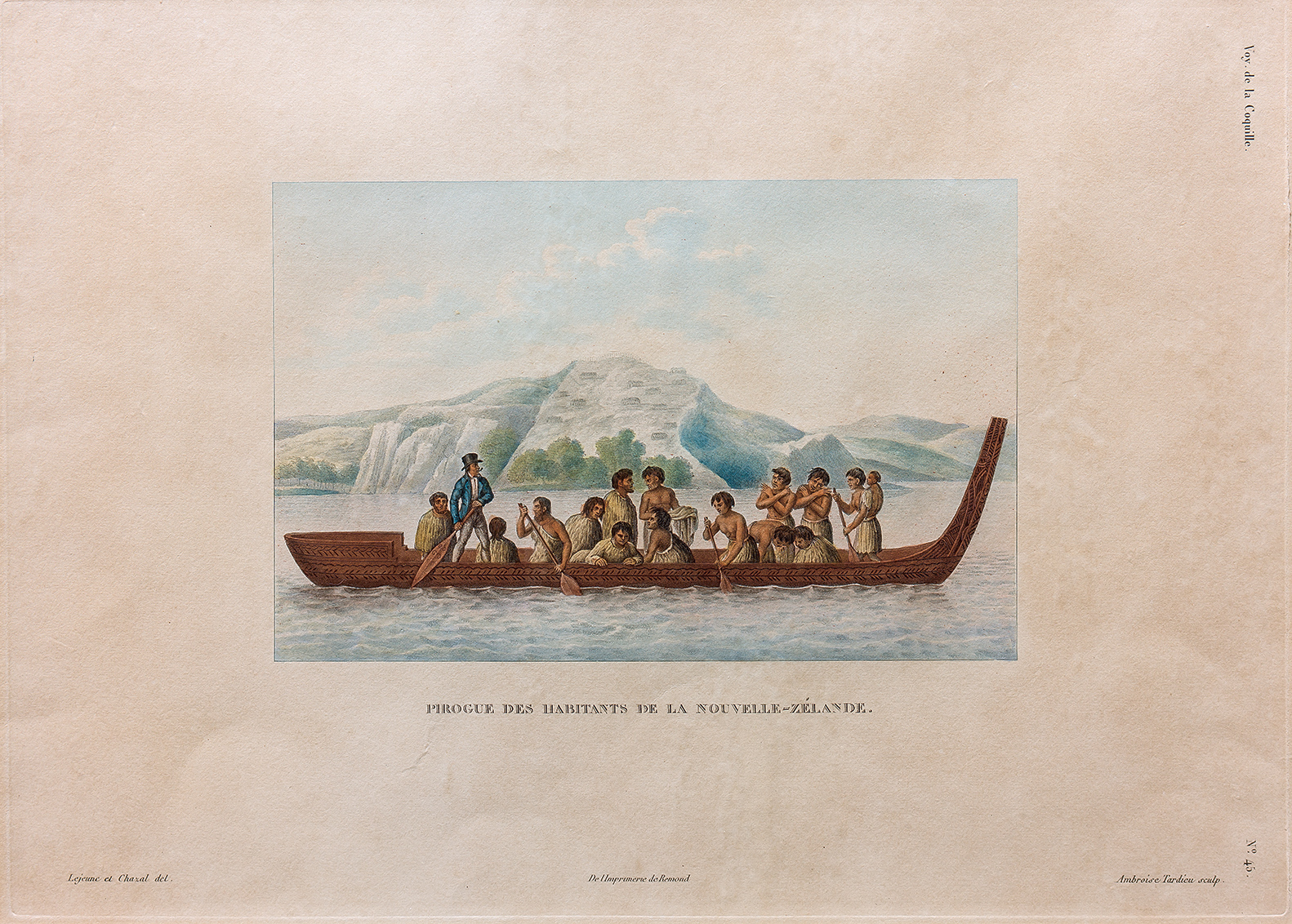LEJEUNE, Jules Louis; CHAZAL, Antoine;
Canoe of the Inhabitants of New Zealand
1826
Hand-coloured engraving on paper
340 x 555mm

Original title: ‘Pirogue des Habitants de la Nouvelle-Zélande’. Engraved by Ambroise Tardieu. Plate No. 45 from Louis Isidore Duperrey, Voyage autour du monde, exécuté par ordre du roi, sur la corvette de Sa Majesté, la Coquille, pendant les années 1822, 1823, 1824, et 1825 (Paris: Arthus Bertrand, 1826). Other lithographs from the series can be viewed here.
The following text comes from the catalogue for the exhibition Tirohanga Whānui.
This was a sight that must regularly have greeted the returning French party as it came and went from Pāroa Bay where the Coquille was anchored. Behind the waka the pā Kahuwera rises up, like Rangihoua (with which it has sometimes been confused) it is sited on a steep hillside above the sea.
Lejeune’s original watercolour was dated 10 April 1824, the day on which the party returned from Kerikeri as described by de Blosseville (see Plate 43). It was titled ‘Inhabitants of New Zealand with a view of their fortified stronghold or Hippah’. This was altered to the present title when Chazal tidied the watercolour. While some details remain the same, he significantly altered the originally more lively grouping of people in the waka, removing their facial moko and simplifying the carving on the taurapa (stern post) in the process.
On the left of the waka is the distinctive figure of Tuai, chief of Kahuwera, identifiable by his European dress for which he clearly had a penchant (see also Plate 47) including top hat and a pipe. Among the fifteen on board are two paddlers and a woman with a baby strapped to her back, also holding a paddle, and two others with inclined heads whose arms are identically crossed over their upper bodies, perhaps performing a waiata.
Exhibition History
Tirohanga Whānui: Views from the Past, Te Kōngahu Museum of Waitangi, 15 April to 15 September 2017

